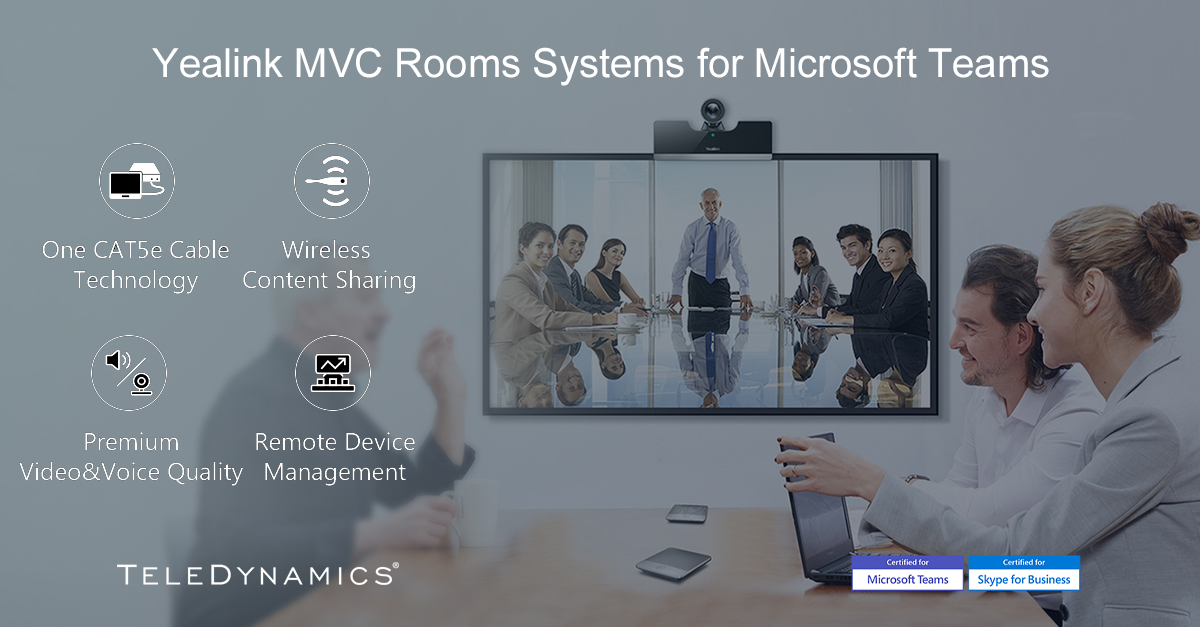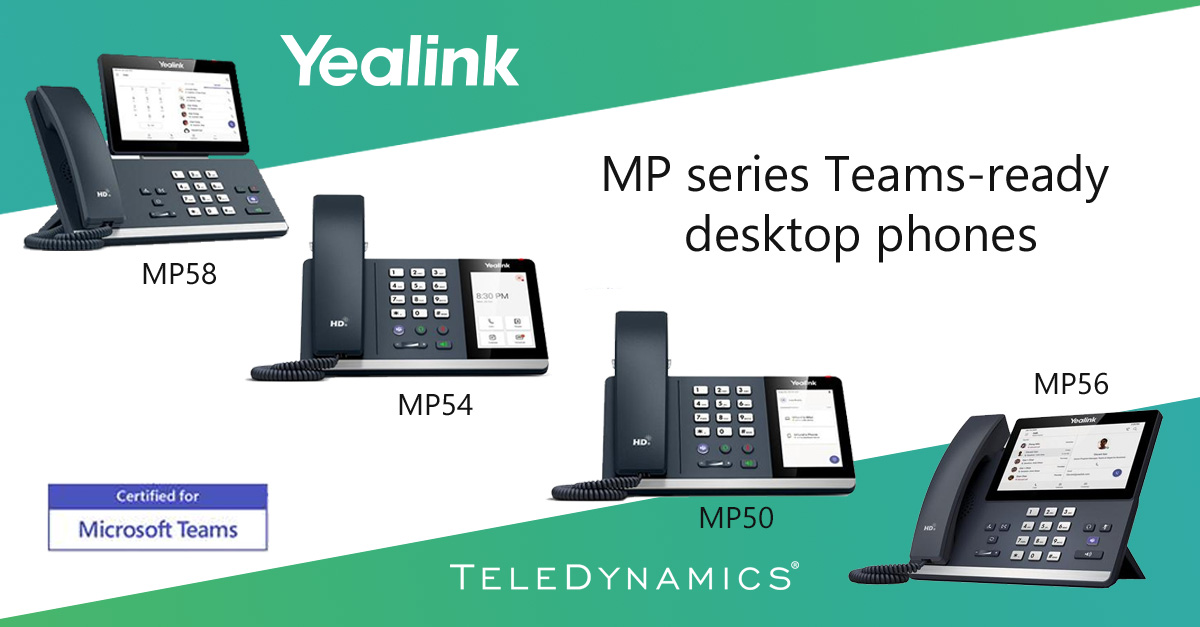Wireless Internet Service Providers (WISPs) have traditionally relied on the use of Wi-Fi technologies that leverage unlicensed frequency ranges of 2.4 and 5 GHz, along with all of the legal limitations that come with them. Recently, however, additional connectivity options have been made available and much more affordable to WISPs. Among those options is the use of Long Term Evolution (LTE) solutions. In this article, we examine how WISPs can use LTE for their networks, which was a topic of particular interest at WISPAMERICA this year.
TeleDynamics Think Tank
Daniel Noworatzky

Recent Posts
Topics: Wireless, Trends, Wi-Fi, Regulations, WAN Technology, WISP
Product Review
Facility management systems are becoming more sophisticated and more deeply integrated with other systems. Video surveillance, intercom and paging, as well as security and access services, are just some of the systems that can be converged into a single service to deliver more functionality and flexibility to any organization.
In order to more effectively and efficiently manage these interconnected systems, Grandstream offers a series of facility management products and services, which we examine in this article.
Topics: Grandstream, Peripherals, Software Integration, Surveillance, Facility Management
Yealink MVC rooms systems for Microsoft Teams
Product Review
Microsoft Teams has become among the most extensively deployed collaboration platforms in the world. As such, Yealink has teamed up with Microsoft to deliver hardware that is not only compatible with the Teams platform, but also Microsoft certified. This guarantees an extensive level of compatibility with all of Microsoft’s innovative features.
In this article, we review Yealink’s MVC series of kits, known as Microsoft Teams Room Systems, that are designed to take full advantage of Teams collaboration features for meeting rooms, ranging from small focus rooms to extra-large conference rooms.
Topics: Yealink, Videoconferencing, Conferencing, Productivity, Product Review, Unified Communications, Microsoft, Collaboration
Now that many workers have had to adapt to working remotely since the pandemic, headsets have become increasingly popular because they free up users’ hands (and shoulders) for a more comfortable and flexible communications experience.
Yealink has developed numerous headsets with a wide range of features and functionalities to fit almost all communication requirements. Not only that, but Yealink has also introduced a full-line incentive program for its headsets, good through the end of 2021.
Topics: Yealink, Peripherals, Headsets, Productivity, Product Review
TeleDynamics expands its relationship with Ribbon Communications
We are excited to announce the launch of TeleDynamics’ Ribbon Connect for MS Teams service. Our collaboration with Ribbon Communications is an example of how partnerships can deliver products and services to that are greater than the sum of their parts. Keep reading to see what exciting possibilities this collaboration facilitates for your business, and save your spot for our webinar on 6 May.
Topics: Software Integration, Trends, Productivity, Unified Communications, Microsoft, Collaboration
Yealink’s MP series of Teams-certified desktop phones
Product Review
Organizations can do business only as well as they can communicate. In a world where work methods and locations are in flux, the flexibility, adaptability, and ease-of-use of companies’ communications equipment are vital.
With the introduction of the Teams-certified MP series of desktop phones, Yealink successfully continues its quest to provide the best communications equipment and services for companies of all sizes.
Topics: Yealink, Software Integration, Trends, Mobility (including remote work), Android, Product Review, Bluetooth, Unified Communications, Microsoft
Grandstream GUV3050 BT headset: high performance plus all-day comfort
Product Review
This article completes our three-part series on Grandstream’s GUV line of personal collaboration endpoints by focusing on the new GUV3050 Bluetooth headset, which delivers both comfort and performance to remote and onsite workers alike.
Topics: Grandstream, Peripherals, Mobility (including remote work), Cordless, Headsets, Productivity, Product Review, Bluetooth, Unified Communications
Product Review
Effective communication requires the ability to see and hear each other clearly. With today’s distributed workforce trends, new technologies and devices are needed to deliver the high-quality audio and video that workers are accustomed to in their in-person meetings. Grandstream has made great strides in rolling out innovative endpoints to make remote communications not only of higher quality, but more comfortable, as well.
In this article, we review Grandstream’s exciting GUV3100 HD webcam, which is part of the GUV series of personal collaboration endpoints.
Topics: Grandstream, Peripherals, Trends, Mobility (including remote work), Videoconferencing, Productivity, Product Review, Unified Communications
What’s impressive about Grandstream’s GUV series USB headsets
Product Review
Whether you are in a busy office environment or working remotely, having the proper gear is important for ensuring that you do your job effectively and comfortably. That is why Grandstream’s GUV series of USB headsets are a great addition to a worker’s arsenal, especially for those spending a lot of time in voice communications with colleagues, partners or customers.
Topics: Grandstream, Peripherals, Mobility (including remote work), Headsets, Product Review
The COVID-19 pandemic has irreversibly affected remote working and teleworking trends. Yealink has responded to the needs of this paradigm shift with a wide range of work-from-home solutions for dispersed professionals.
In addition to its collaboration equipment, Yealink has launched a new program for companies that have a Microsoft Teams license with 100 or more seats, whereby they can get 50% off the MSRP on eligible products (expires June 30, 2021). Even if you don’t have customers that are eligible to participate in the discount offer, read on to learn about Yealink’s wide range of work-from-home solutions.
Topics: VoIP, Total Voice Solution, Yealink, Trends, Mobility (including remote work), Headsets, Videoconferencing, Conferencing, Productivity, Unified Communications
Welcome to our Think Tank
In this blog you'll read our thoughts on business telephone systems. While a lot has changed in telecom since TeleDynamics was founded in 1981, we remain as committed as ever to delivering the best customer service in the industry.
If you would like elaboration on a specific topic, please let us know in the comments section.
Happy reading and thanks for stopping by!
Receive New Articles by Email

Recent Posts
Posts by Topic
- 5G
- AI
- Android
- Avaya
- Bluetooth
- Boom Collaboration
- Business Continuity
- Business Strategy
- Business Telephone System
- Case Study
- Catalog
- Cisco
- Cloud
- Collaboration
- Communication
- Conferencing
- Cordless
- CPaaS
- Customer Service
- Customer Success Story
- CyberData
- DECT
- E911
- Events
- Facility Management
- Firewall
- Firmware Upgrades
- FoIP
- Gateway
- Grandstream
- Headsets
- Home Security
- IoT
- IP PBX
- Jabra
- Konftel
- Leasing
- Microsoft
- Mobile
- Mobility (including remote work)
- NEC
- Network Design
- Network Infrastructure
- Network Security
- News
- OTT VOIP
- Outsourcing
- Panasonic
- Peripherals
- PoE
- Polycom
- Power Management
- Product Review
- Productivity
- Protocols & codecs
- QoS
- Regulations
- Routers
- SD-WAN
- SIP
- SIP Phones
- Snom
- Software Integration
- Surveillance
- Switches
- Total Voice Solution
- TP-Link
- Trends
- Troubleshooting
- UCaaS
- Unified Communications
- Videoconferencing
- VLAN
- Voicemail
- VoIP
- VoWi-Fi
- VTech
- WAN Technology
- Wi-Fi
- Wireless
- WISP
- Yealink
- Yeastar
- Zoom













.jpg)


